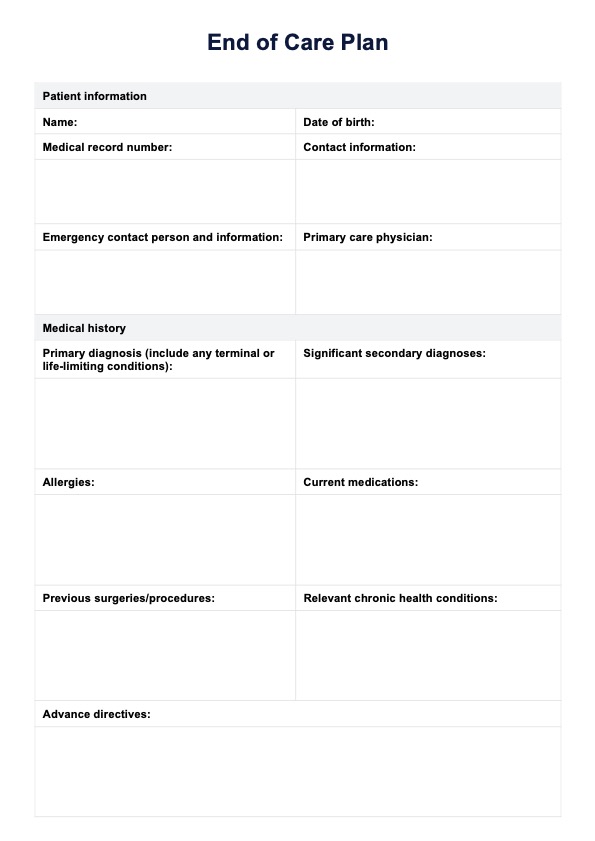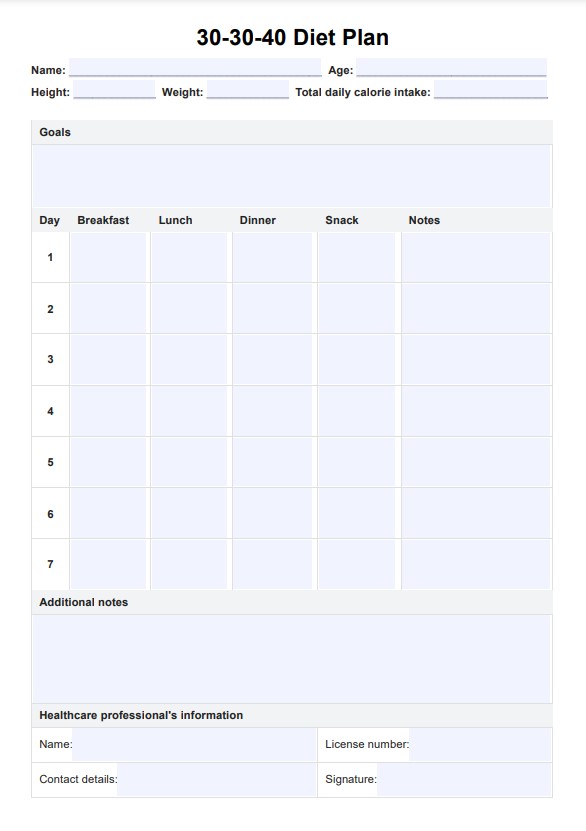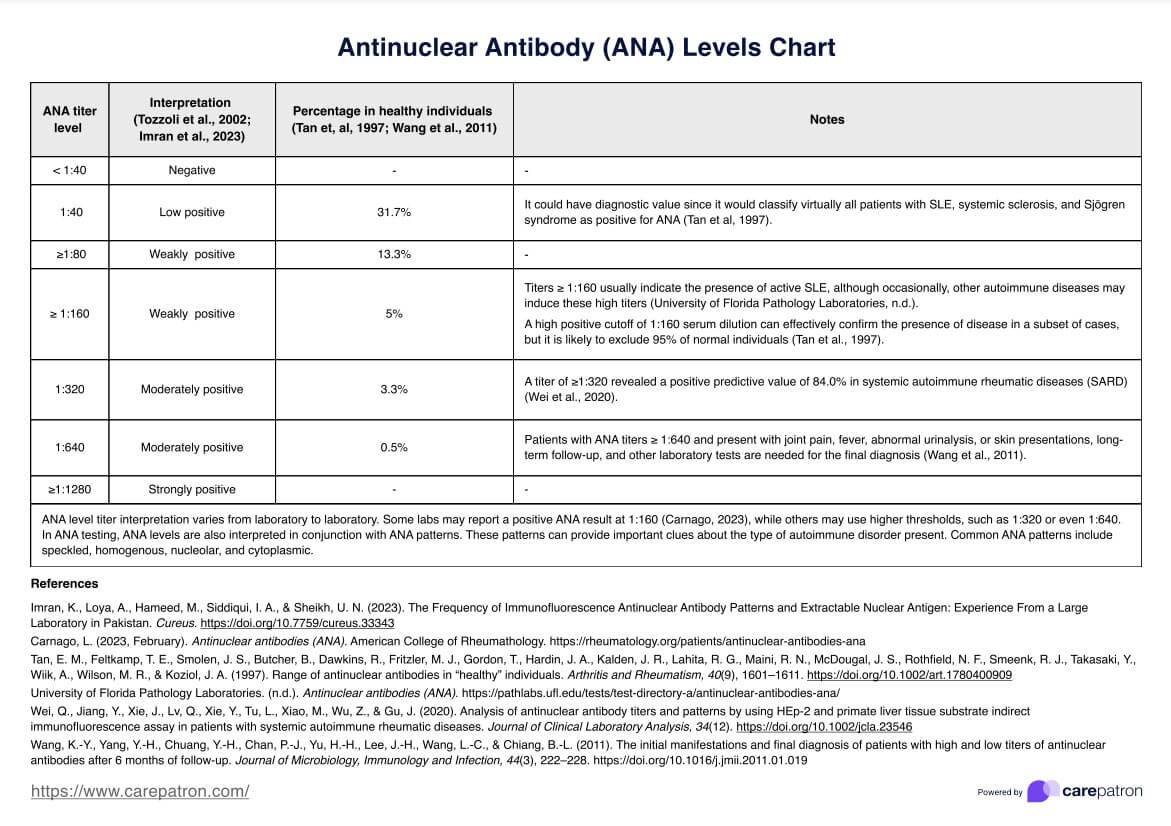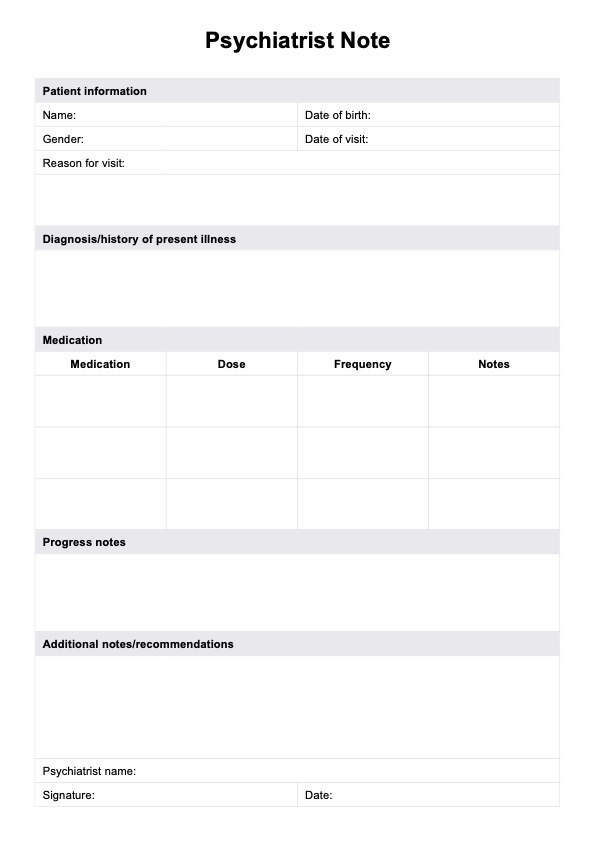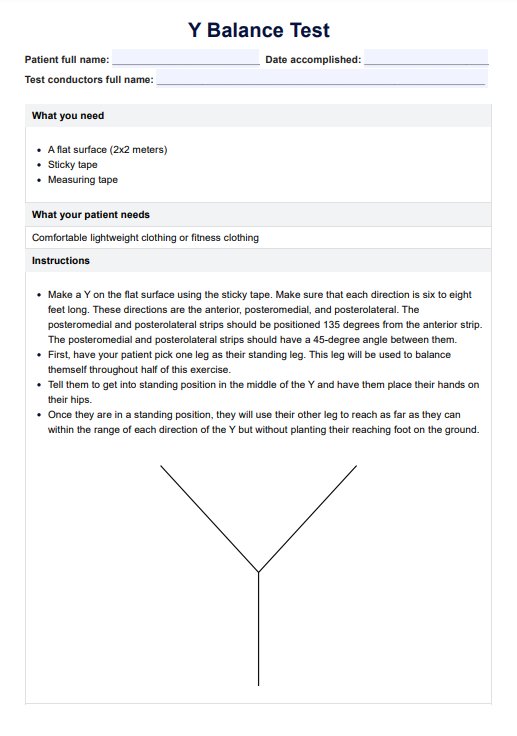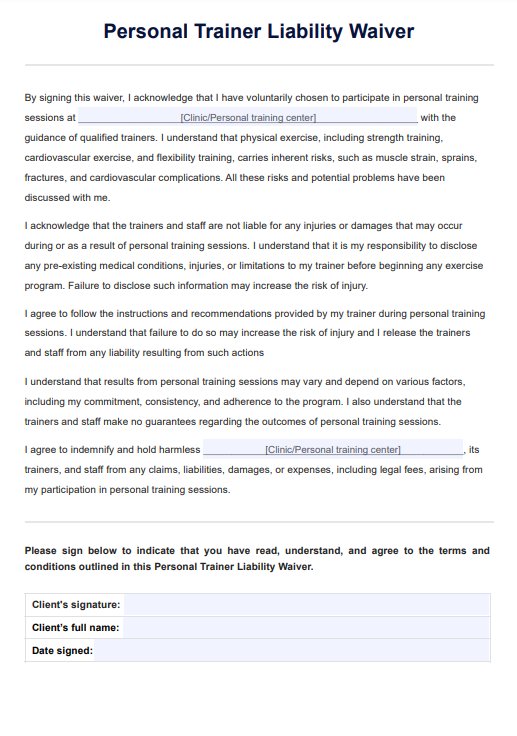Resting Heart Rate Charts
Download our free resting heart rate chart template and example to assess your fitness level and improve cardiovascular health.


What is a Resting Heart Rate Chart?
A heart rate chart is a visual reference tool that allows individuals and healthcare practitioners to monitor heart rate. In essence, a Resting Heart Rate (RHR) chart is a comprehensive reference tool that presents a range of heart rates at rest for different age groups and fitness levels. Your resting heart rate, measured in beats per minute (bpm), is the number of times your heart beats while you are entirely at rest. It serves as a vital indicator of your cardiovascular health, overall fitness, and the efficiency of your heart function.
The primary purpose of a resting heart rate chart is to help you understand and compare your RHR to the average values of people in your age group. The chart is divided into categories: Athlete, Excellent, Good, Above Average, Average, Below Average, and Poor. By identifying the category your RHR falls into, you can assess your current fitness level, monitor your progress, and set goals for improvement.
An RHR chart can also help you identify potential health issues related to your cardiovascular system. For instance, a consistently high RHR may indicate poor fitness or underlying health concerns, while a very low RHR can sometimes signal certain medical conditions. In such cases, it is essential to consult a healthcare professional for further evaluation.
Using a lets you gain valuable insights into your heart's efficiency and make informed decisions regarding your exercise routine, lifestyle habits, and overall well-being. This tool benefits individuals seeking to improve their fitness levels and professionals such as coaches, trainers, and healthcare providers working with clients or patients to achieve better cardiovascular health.
Locate Your Pulse
To find your pulse, the best place is within the wrist. Turn your hands so that your palm is facing upwards, and place the three middle fingers from your other hand on top of your wrist. Press slightly to feel the pulse, however, if you do not feel anything, press a bit harder. Make sure not to hurt yourself.
Alternatively, if you cannot find a pulse, you can also check your neck underneath your jawbone, and the inside of your elbow.
Check Your Pulse
To assess your heart rate, count each beat for a total of 30 seconds. Once complete, double the number of bits you counted. This is known as your heart rate or your pulse, which is measured in beats per minute (BPM).
It is important to note that your heart should beat at an even rhythm. If you have been active recently or have taken caffeine or another type of stimulant, it is recommended that you wait at least 5 minutes before taking your pulse.
Normal Heart Rate
A normal heart rate, otherwise known as your resting heart rate, is generally around 60 to 100 beats per minute. There are many factors that can influence your heart rate, including your level of activity. If you are an athlete or a fit person, you may have a resting heartbeat of less than 60 beats per minute. When you are active, your heart rate should be much higher, and can increased to 160 beats per minute or more. If you feel anxiety, excitement, or fear, your heart rate can also increase.
Sometimes, you can have an irregular pulse. This is known as an irregular heart rate or an arrhythmia. This is harmless in many cases, however, this may be indicative of a medical condition that can increase your chances of having a stroke. An irregular heartbeat is different to heart palpitations, where your heart may feel like it is going too fast or too slow, or it is fluttering or thudding. Heart palpitations are also generally harmless, however if they are a regular occurrence you should consult a healthcare professional.
Resting Heart Rate Charts Template
Resting Heart Rate Charts Example
How does this Resting Heart Rate Assessment work?
To effectively use the resting heart rate chart, follow these steps:
Step 1
Measure your resting heart rate. Find a quiet, comfortable place to sit or lie down. Ensure you are relaxed and have not engaged in physical activity or consumed stimulants for at least 30 minutes. Use a heart rate monitor or find your pulse manually. Count the beats for 60 seconds (or count for 30 seconds and multiply by 2) to determine your RHR in bpm.
Step 2
Locate your age group on the chart's left side to find the appropriate row to reference.
Step 3
Compare your measured RHR with the values in the row corresponding to your age group. Your RHR will fall into one of these categories: Athlete, Excellent, Good, Above Average, Average, Below Average, or Poor.
Step 4
Interpret the results, remembering that a lower RHR usually indicates better cardiovascular fitness. However, other factors may also influence your RHR, so it's essential to consult a healthcare professional if you have concerns.
Scoring
Resting Heart Rate Chart scoring is straightforward. Your RHR falls into one of the categories listed in the chart. These categories range from Athlete to Poor, with each category representing a general fitness level.
A lower RHR typically signifies better cardiovascular health, whereas a higher RHR may indicate a need for improvement.
When to use these Resting Heart Rate Chart templates?
Resting heart rate chart templates are versatile tools used to assess fitness levels, monitor improvements, and track changes in cardiovascular health. Some common scenarios when it is appropriate to use these templates include:
Initial Fitness Assessment
Suppose you are starting a new exercise program or working with a personal trainer. In that case, you can use the resting heart rate chart template to establish a baseline measurement of your cardiovascular fitness. This baseline will help you set realistic goals and track your progress.
Regular Monitoring
Regularly measuring your resting heart rate and comparing it to the chart can help you monitor your cardiovascular health, identify trends, and adjust your exercise routine or lifestyle habits. This can be particularly helpful for individuals with existing heart conditions or those at risk for developing cardiovascular issues.
Tracking Progress
As you improve your fitness level, the resting heart rate chart template can be a valuable tool to track your progress. Comparing your current RHR to previous measurements and the average values for your age group can help you visualize your improvements and stay motivated.
Evaluating Exercise Programs
Coaches, trainers, and healthcare professionals can use the resting heart rate chart template to assess the effectiveness of their clients' or patients' exercise programs. By comparing RHR values before and after implementing a new program or making changes, these professionals can evaluate if the program is helping their clients or patients reach their fitness goals.
Health Check-ups
During routine health check-ups, healthcare professionals can use the resting heart rate chart template to assess their patients' cardiovascular health and discuss any necessary lifestyle changes or treatments to improve their RHR.
In summary, the resting heart rate chart templates are suitable for various scenarios when assessing fitness levels, monitoring improvements, and tracking changes in cardiovascular health. They can be used by individuals seeking to improve their heart's efficiency and coaches, trainers, and healthcare professionals working with clients or patients.
Who is this Resting Heart Rate PDF for?
The resting heart rate PDF is designed for a diverse range of individuals and professionals interested in assessing and monitoring cardiovascular health and fitness levels. These include:
Athletes
Competitive athletes can use the chart to evaluate their cardiovascular fitness and track improvements, ensuring they are in peak condition for their sport.
Fitness enthusiasts
Individuals passionate about maintaining a healthy lifestyle and improving their fitness can use the chart to monitor their progress and set goals for improvement.
Individuals concerned about heart health
People with a family history of heart disease or other risk factors can use the chart to assess their current fitness level, identify areas for improvement, and monitor changes in their cardiovascular health over time.
Coaches
Sports coaches can use the chart to evaluate their athletes' fitness levels and tailor training programs to maximize performance and reduce the risk of injury.
Personal trainers
Fitness professionals can use the chart to assess their clients' fitness levels, set achievable goals, and track progress, ensuring they see tangible results from their training programs.
Healthcare professionals
Doctors, nurses, and other healthcare providers can use the chart to assess patients' cardiovascular health, identify potential risk factors, and provide personalized recommendations for improving fitness and reducing the risk of heart-related issues.
Corporate wellness programs
Companies that offer employee wellness programs can use the chart to evaluate participants' fitness levels, track progress, and design targeted interventions to improve overall employee health and well-being.
In summary, the resting heart rate PDF is a versatile tool suitable for individuals and professionals who want to assess, monitor, and improve cardiovascular health and fitness levels.

Benefits of Free Resting Heart Rate Chart
A free resting heart rate chart provides numerous benefits that help individuals monitor and improve their cardiovascular health and overall fitness. By understanding the significance of their resting heart rate, users can make informed decisions about their exercise routines and lifestyle habits.
Let's delve deeper into the key benefits of using a free resting heart rate chart:
Easy to use
The chart is designed to be user-friendly and straightforward to understand, making it accessible for individuals of all fitness levels. Users can quickly assess their RHR and interpret the results by following a few clear steps.
Encourages self-awareness
The chart promotes greater self-awareness by helping users become more conscious of their fitness levels and overall cardiovascular health. This heightened awareness can motivate individuals to take proactive steps toward improving their well-being.
Tracks progress
Regularly measuring your RHR and comparing it to the chart enables you to track your fitness and cardiovascular health improvements over time. This can provide valuable insights into the effectiveness of your exercise routine and other lifestyle changes.
Motivates healthy lifestyle choices
Using the chart can serve as an impetus for adopting healthier habits, such as regular exercise, stress management techniques, and better nutritional choices. These positive changes can contribute to improved RHR and overall health.
Supports informed decision-making
The chart helps users make educated decisions about their exercise routine, lifestyle habits, and when to seek professional advice. By understanding where their RHR falls within the chart, individuals can tailor their approach to fitness and health to achieve optimal results.
Commonly asked questions
Measure your resting heart rate, locate your age group on the chart, compare your RHR to the values listed, and interpret the results to determine your fitness level and cardiovascular health.
Your RHR falls into one of the categories on the chart, ranging from Athlete to Poor. A lower RHR usually indicates better cardiovascular fitness, while a higher RHR may indicate a need for improvement.
The chart is scored by categorizing your RHR into one listed category. Each category represents a general fitness level, with lower RHRs typically signifying better cardiovascular health.


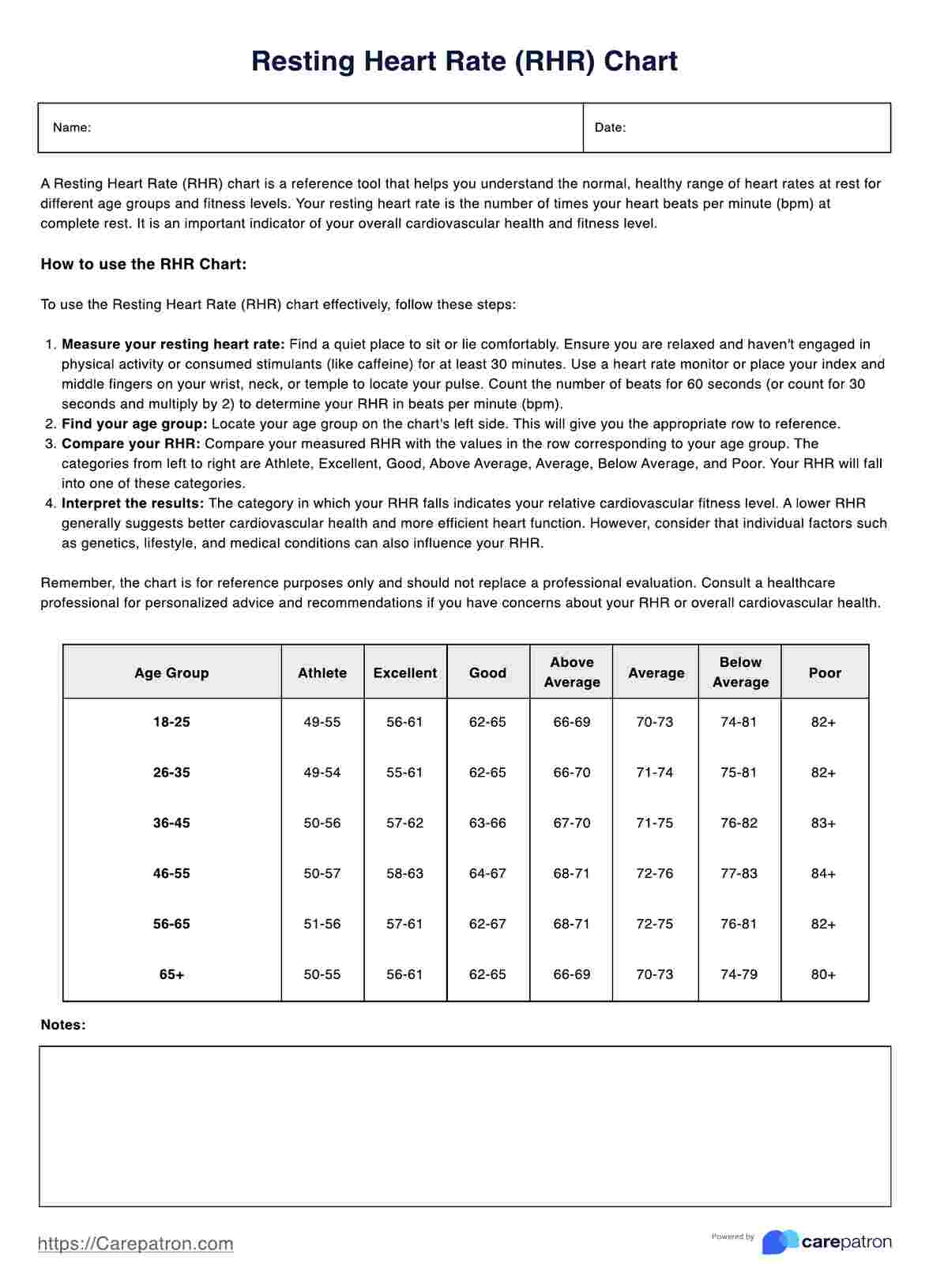
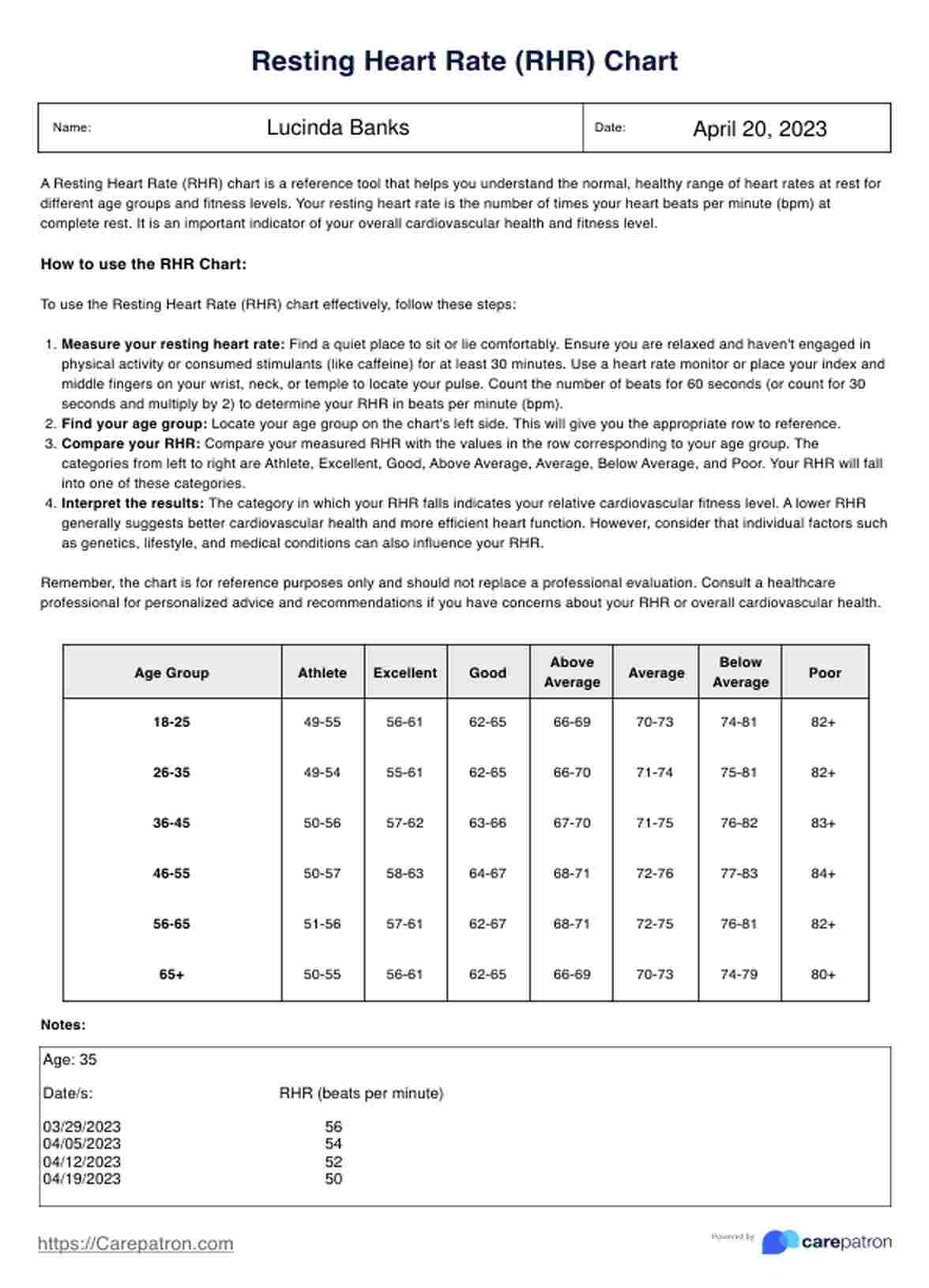


















-template.jpg)

















































































